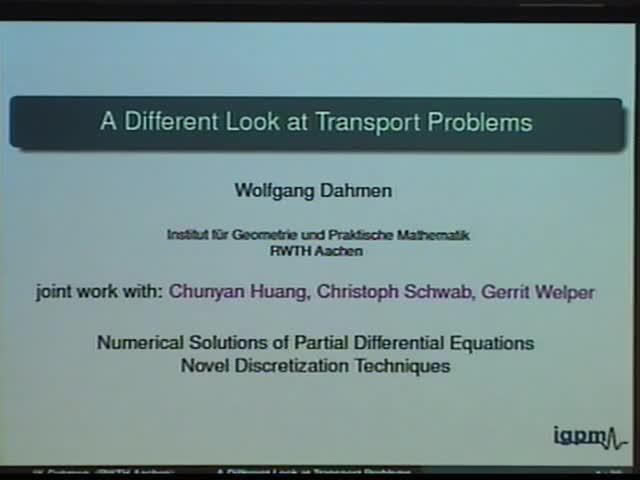A different look at transport problems
Presenter
November 4, 2010
Keywords:
- Transport
MSC:
- 82C70
Abstract
Joint work with Chunyan Huang, Christoph Schwab and Gerrit
Welper.
The success of adaptive (wavelet) methods for operator equations relies on well-posedness of
suitable variational formulations and on the
availability of Riesz bases (or frames) for the corresponding energy space provided that
the corresponding representation of the operator is in a certain sense quasi sparse.
When dealing with transport dominated problems
such favorable conditions are no longer met for the commonly used variational principles. Moreover, solutions typically exhibit strongly anisotropic features
such as layers or shocks. Focussing for simplicity on the simplest model of linear transport
we present alternative variational formulations that are, in particular, stable in L2 so that corresponding discrete solutions are best approximants in L2. Moreover, this provides a theoretical platform for ultimately employing directional representation systems like shearlets, which are known to form L2-frames and offer much more economical sparse representations of anisotropic structures than classical wavelet systems.
This is a central objective in an ongoing collaboration with G. Kutyniok's group within the Priority Research Programme (SPP) No. 1324 of the German Research Foundation.
In principle, the approach can be understood as a Petrov-Galerkin formulation in the infinite dimensional setting.
We address several theoretical and (uncommon) numerical tasks arising in this context and indicate first steps towards rigorously founded adaptive solution concepts. These results are illustrated by preliminary numerical experiments first in a finite element setting.
